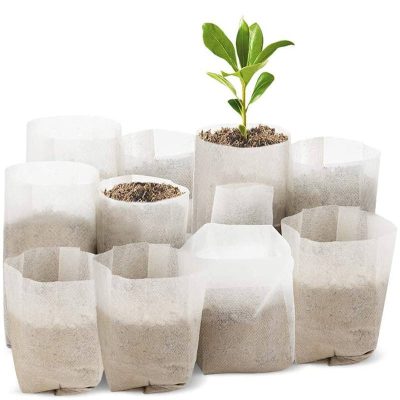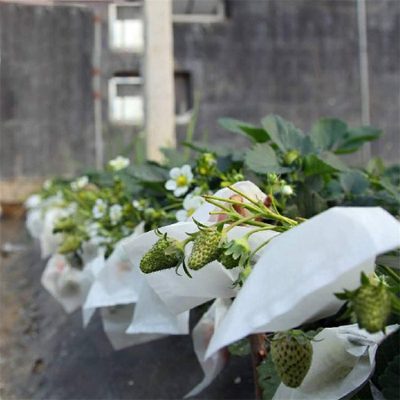Both non-woven grow bags and fabric grow bags have their own advantages and considerations. Let’s compare them to help determine which option may be better suited for your needs:
Non-Woven Grow Bags:
Advantages:
- Breathability: Non-woven grow bags offer excellent breathability, allowing for proper airflow and preventing root rot.
- Root Development: The porous nature of non-woven grow bags promotes air pruning and encourages the growth of dense, fibrous root systems.
- Water Drainage: Non-woven grow bags allow excess water to drain out easily, reducing the risk of overwatering and waterlogged soil.
- Lightweight and Portable: Non-woven grow bags are typically lightweight and easy to move, making them convenient for gardeners who want to relocate plants.
- Versatility: They can be used for various plants and can be placed on different surfaces.
Considerations:
- Durability: Non-woven grow bags may have a shorter lifespan compared to fabric grow bags, especially with prolonged exposure to sunlight and frequent movement.
- Temperature Fluctuations: They may experience temperature fluctuations more easily, which could impact plant growth in extreme weather conditions.
- Water Evaporation: Non-woven grow bags may have slightly higher water evaporation rates compared to fabric grow bags, requiring more frequent watering in certain climates.
- Size Limitations: Large or heavy plants with extensive root systems may require sturdier containers than non-woven grow bags.
Fabric Grow Bags:
Advantages:
- Durability: Fabric grow bags are often made of sturdy materials, such as woven polypropylene, and can withstand multiple growing seasons.
- Breathability and Drainage: They offer good breathability and drainage, allowing for proper airflow and preventing waterlogging.
- UV Resistance: Fabric grow bags can be UV resistant, ensuring a longer lifespan even with prolonged exposure to sunlight.
- Root Health: The fabric material encourages air pruning and prevents root circling, promoting healthier root systems.
- Reusability: Fabric grow bags are designed for multiple use and can be folded and stored easily when not in use.
Considerations:
- Water Retention: Fabric grow bags may retain more moisture than non-woven grow bags, which can be advantageous in drier climates but may require careful watering management.
- Weight: Fabric grow bags can be heavier compared to non-woven grow bags, which can make them less portable.
- Cost: Fabric grow bags are generally more expensive than non-woven grow bags, although they offer long-term value through reusability.
Ultimately, the choice between non-woven grow bags and fabric grow bags depends on your specific gardening needs and preferences. Consider factors such as plant size, durability requirements, climate conditions, and portability when deciding which option is better suited for you.








